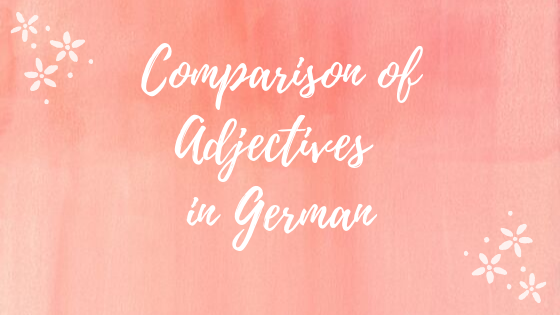Author: Jadranka Bokan
We build the comparative in German by adding the ending “-er” to the positive (basic adjective form), while the superlative is being built by adding “am” in front of the positive and adding the ending “-sten” to the end.
Here are the typical scenarios for building the comparative and superlative in German:
The simplest examples:
schön > schöner > am schönsten
Other similar examples: klein, schnell, neu, langsam
When the adjective ends in d/-t or -s/-ß/-x/-z we have to add one additional “e” in front of the ending -sten in superlative:
interessant > interessanter > am interessantesten
Other similar examples: nett
heiß > heißer > am heißesten
Monosyllable Adjectives with the stem-vocal “a”, “o”, “u” get the umlaut:
alt > älter > am ältesten
Other similar examples: warm, kalt, lang, stark, hart
groß > größer > am größten
Other similar examples: oft, grob

jung > jünger >am jüngsten
Other similar examples: kurz, klug, dumm, gesund
There are also the so called irregular forms and we have to learn them by heart:
gern > lieber > am liebsten
gut > besser > am besten
viel > mehr > am meisten
There are some interesting cases/adjectives where slight changes happen and we need to notice and learn them:
hoch > höher > am höchsten
nah > näher > am nächsten
teuer > teurer > am teuersten
dunkel > dunkler > am dunkelsten
Let us see how the positive, comparative and superlative should be used in a sentence:
We will use the positive when two things share the same quality:
Maria läuft so schnell wie Susanne.

We will use the comparative when there is a difference between them:
Friederike läuft schneller als Maria.
“als” requires the Nominative: ich bin schneller als du.
And here is the superlative:
Marko läuft am schnellsten.
When the adjective is placed on the RIGHT hand side of the noun, it looks like in all the above examples i.e. it doesn’t get any additional endings:
Das Mädchen ist schön.
Maria ist schöner als Eva.
Lisa ist am schönsten.
When the adjective is placed on the LEFT hand side of the noun, its forms (positive, comparative and superlative) get some endings in accordance with the adjective declension and then it looks like this:
Das schöne Mädchen heißt Maria.
Das schönere Mädchen heißt Marijana.
Das schönste Mädchen in der Klasse heißt Ema.


